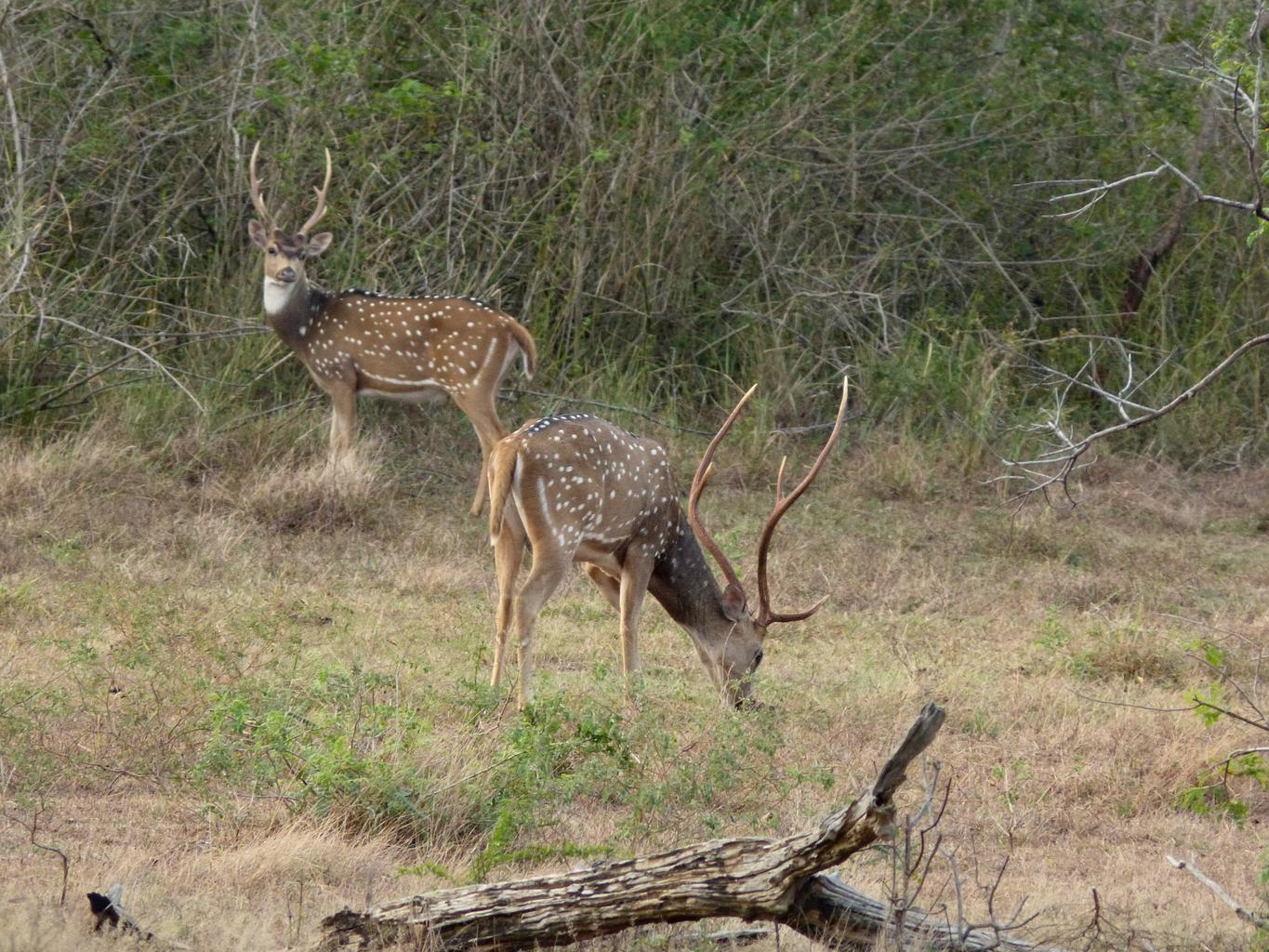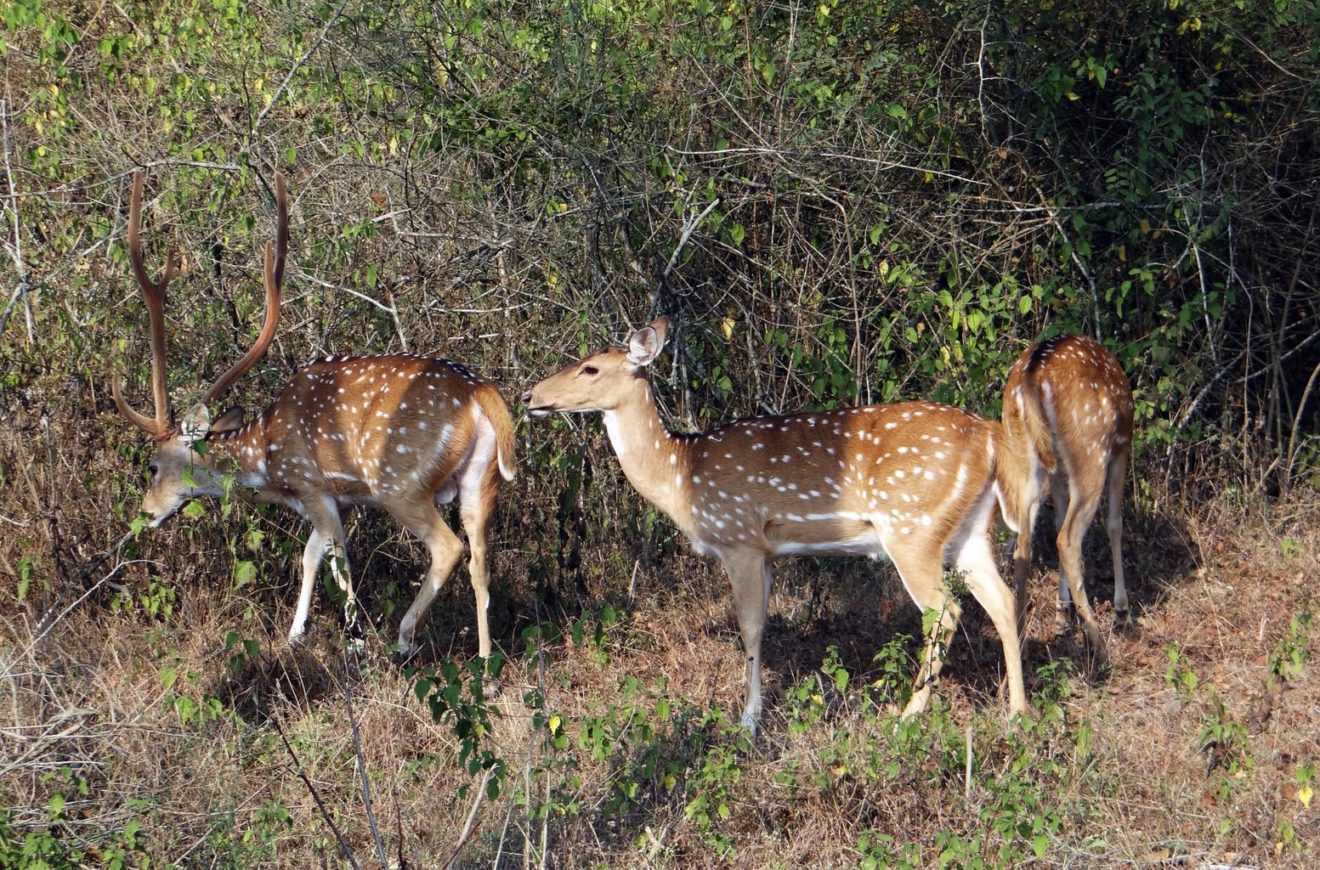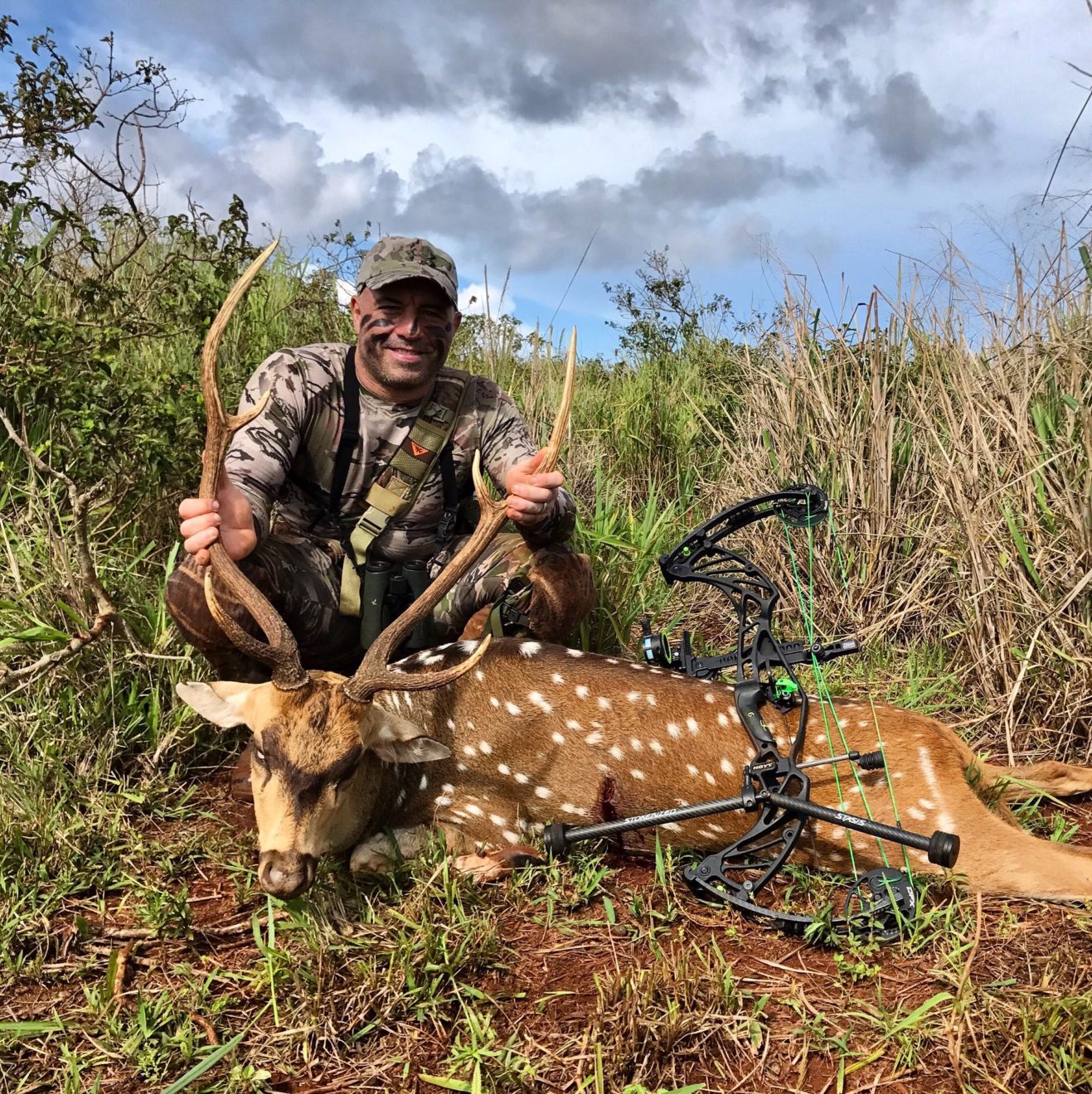Axis Deer: Year Round Hunting Opportunities
I’ll never forget going on a late morning drive with my father on his deer lease during the early 80s. It was a summer work weekend, and the Texas heat had already set in. After rounding a bend on the rocky old road, I suddenly saw a barrage of huge antlers. As they came into focus, it became apparent that they weren’t whitetails. The tall main beams seemed to touch the lower branches of the shaded oak canopy where these creatures jumped up from. This was my first encounter with Axis deer. Though these free-range deer were off-limits to the hunters on the lease, they were a treat for the eyes – one I’ll never forget.
Background and Traits
Originally from India, the axis deer (or chital), is widely considered to be the most attractive and majestic deer species around. The vibrant red coat and white spots are striking, as is the prominent black stripe running down the back. Axis racks typically have no more than three points per side. However, what they lack in tines is compensated by their tall frames. The appearance is akin to a bull elk — not a bad thing.
Medicine for the Whitetail Offseason
Here is the best part: Axis deer can be hunted year-around (even antlered bucks). Without a matched breeding season, there are hard-antlered bucks in almost any month. However, the peak of the estrus for does fall during June and July. Consequently, this is also when most bucks will exhibit hard antlers. This makes the summer the optimal time to hunt Axis deer. Additionally, they are considered an exotic animal in Texas, and there is no closed season or bag limits. This is great news for whitetail nuts biding their time through the offseason, desperately waiting for autumn.
Texas alone houses more than 40,000 axis deer, with more than 6,000 of them roaming free-range areas in the Lone Star State (some even on public lands). Since axis deer breeding occurs year-round, it’s safe to say that the herd is growing. Many does give birth twice per year. With these kinds of numbers, opportunity abounds for almost any hunting style.
The Hunt
Axis deer present a great challenge and can be hunted in a variety of ways, including still hunting near feeding areas and watering holes, and stalking. These deer are often vocal, with males piping out loud roars during the rut. Both sexes commonly let out barking sounds like an alarm signal. There is no shortage of hunting ambiance with this wild and regal animal. Much like rutting whitetails, Axis bucks seek and chase does in estrous. Therefore, if you’re lucky enough to have a hot Axis doe in the area, you’ll likely encounter two or more bucks during a sit.
Unlike their whitetail counterparts, Axis deer mainly prefer feeding during daylight hours as opposed to nighttime. Therefore, daytime strategizing can lead to successful shot opportunities. For those who prefer hunting with stick and string, Axis deer present a particularly fun and challenging opportunity.
Great for Wall and Table
As stated, Axis deer have a lot of positive traits for the hunter, including unique biological clocks, behavior, and beauty.
It doesn’t stop there. This majestic species of deer yields an incredible addition to the trophy room, office, or mantle. The majestic antlers and beautiful coat make for a lifetime of conversation pieces.
Finally, Axis provides some of the tastiest wild game meat you’ll find – much better than venison from whitetails. A friend of mine who’s harvested many game animals from around the globe says Axis venison is what beef should taste like. I agree.
Indeed, pursuing, harvesting, and eating Axis deer is a no-brainer in my book — especially when passing the time before whitetail season. What are you waiting for?
Based in Texas, Jerald Kopp is President of 1st Light Hunting Journal. His articles cover a variety of topics about hunting and the outdoor lifestyle. Jerald is an avid outdoorsman with deer hunting and whitetails being by far his greatest passion. He was introduced to hunting and fishing at an early age and has been enjoying it for 40+ years. In 2005, he established the Empowerment Outfitter Network (EON) – a faith-based non-profit organization that provides hunting opportunities for disabled and terminally-ill children and youth. When not hunting, he spends his time traveling and enjoying life with Amy, his wife of over 30 years. Jerald and Amy have two adult daughters and a son-in-law.







